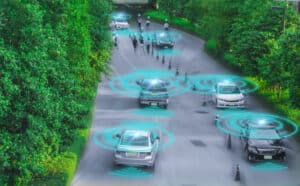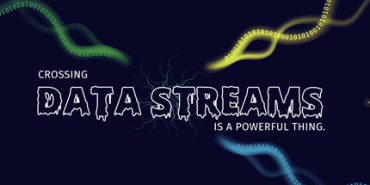
Connected car data is growing fast, with a majority of new cars expected to be connected by the next decade. This offers smart city planners and other city decision-makers a wealth of data that they can use for decision-making and city planning, even in real-time.
Vehicles are a concern for anyone looking to become more mindful of the environment. Traffic problems, emission pollution, and danger for pedestrians and bicyclists make vehicles a challenge to integrate with the ideals of smart cities. However, thanks to connected vehicle data, that could change.
Connected vehicles enable communication between vehicles, the infrastructure, and personal communication devices. These vehicles generate powerful data from these communications, sourcing from the vehicle’s electronic control units (ECUs), Controller Access Networks (CANs), and even infotainment systems. Some examples of this data include location, destination, speed, engine status, and more.
Connected car data is growing fast, with a majority of new cars expected to be connected by the next decade. This offers smart city planners and other city decision-makers a wealth of real event data that they can use for decision-making and city planning, even in real-time.
See also: How Connected Products Enable Predictive Maintenance
A neglected market that could soon take off
Connected vehicle data (CVD) isn’t as popular for smart city planning, but all that’s beginning to change. According to a recent study from Otonomo, 62% of respondents believed that CVD was already helping to solve urban pains, including roadway usage and management, zoning and urban planning, and environmental responsibility.
Once companies begin generating value from this data, we could see a surge in demand and usage. Population growth and disruption from events such as COVID-19 have motivated cities to rebuild differently and take advantage of data to ensure that cities offer the best services and living standards for residents now and in the future.
The data helps solve real-world challenges. First, data can be used in planning and organizing projects. Think alleviating traffic congestion, creating better access to different parts of the city, or even organizing parking. This also includes better planning for one-off events that can significantly disrupt the overall traffic patterns of the city in question.
One event that could drive CVD usage is the adoption of electric vehicles. This data could help cities better plan changing stations and reduce “range anxieties” to help even more people adopt electric vehicles. However, right now, cities report that it’s challenging to get reliable EV data, so this could be a use case in the future.
Extending connected vehicle data to consumer-facing apps
One exciting potential use case is leveraging CVD to design transportation mobile apps for citizen planning. This could have quite a few benefits, including:
- Improving the transparency of planning and public service offerings. Smart cities need a way for citizens to be more involved in public services, so an app could deliver that convenience and ensure that more citizens take advantage.
- Facilitating tourism by providing information about the city’s services, traffic challenges, and even event parking. This would prevent some of the bottlenecks that occur with an influx of tourists that aren’t familiar with the city.
- Ensuring that citizens have more comprehensive access to all transportation opportunities and can coordinate their activities based on a variety of factors such as events, rush hour, or construction.
Current challenges for connected vehicle data
Right now, more people are using traffic cameras or in-road sensors to approximate this type of data. A growing number of cities are also using public mobile data gathered from personal devices.
If connected vehicle data is so valuable, why aren’t more cities using it? There are several substantial obstacles to full adoption and reliance on CVD.
Reliable coverage
More vehicles are being manufactured, but cities still need CVD to be more widespread to rely on the data. By the next decade, this could be a nonissue. In addition, better coverage from 5G connections will enable cities to gather and extract data with reliability and better plan.
Varying regulations
CVD regulations are in their infancy, and cities may be reluctant to risk non-compliance. A federal mandate would help settle the issue. Still, states may need to follow California’s example when it comes to protecting privacy—take charge on their own without the use of federal guidelines.
Cybersecurity challenges
Gathering data also opens cities up to potential cybersecurity threats. However, smart cities will understand that protecting data is vital to continuing data-driving initiatives like these. More cities are reacting to cybersecurity challenges as a first priority, but taking a proactive stance protects everyone.
Citizen trust
Trust for this new technology has been in discussion for years (even RTInsights talked about its importance back in 2017). We’re reaching a tipping point. Citizens are divided over data collection and government involvement. They want greater access to services and better overall experiences within their cities. If governments can take a transparent approach to collecting and leveraging data such as CVD, that would go a long way to shoring up citizen trust (and encouraging more involvement—something these initiatives desperately need).
Connected vehicle data could revitalize smart city efforts
The ability to integrate connected vehicle data could allow more cities to plan with greater accuracy. In addition, citizens could feel that they have more information on their own city to plan and take advantage of services.
CVD must become a single source of data designed to integrate with existing infrastructure data. It must also offer comprehensive, consistent coverage. This provides a system of checks and balances and ensures that all decisions derived from this data are of the highest quality. As we see greater connectivity in vehicles and the infrastructure itself, this could prove a decisive element in pushing cities into the digital age.





























